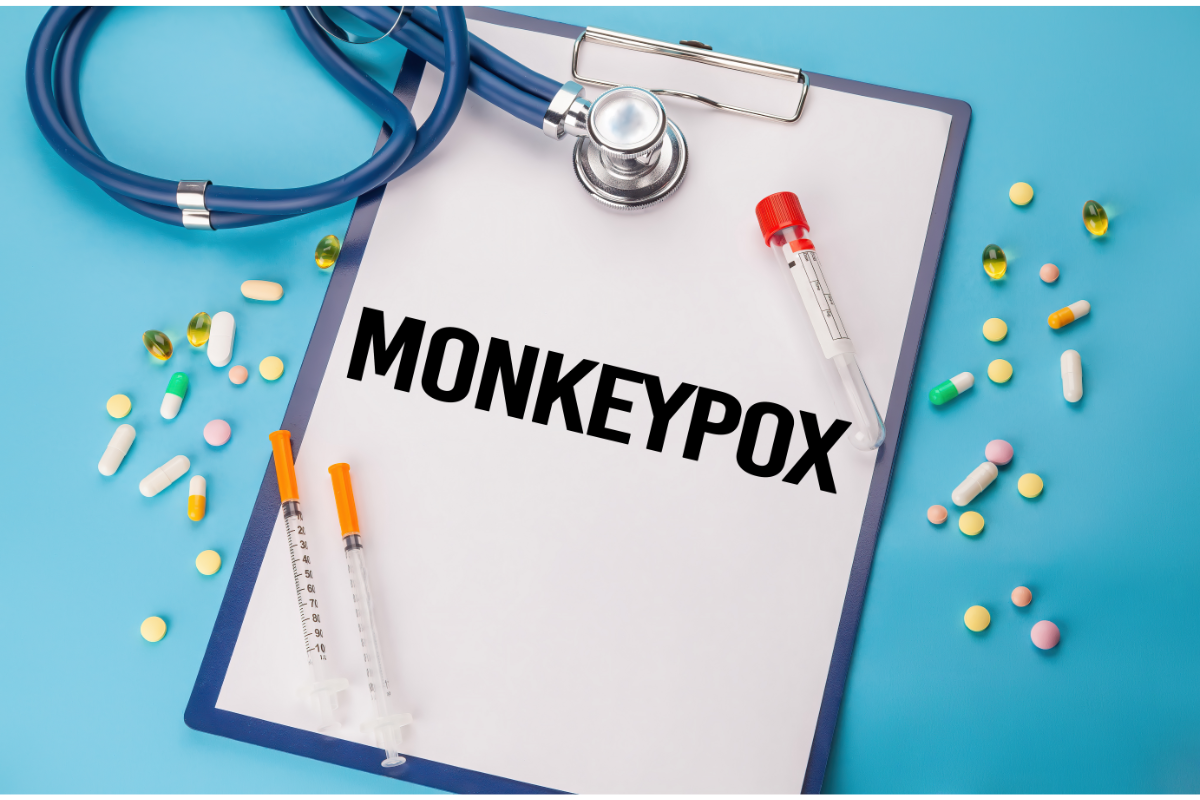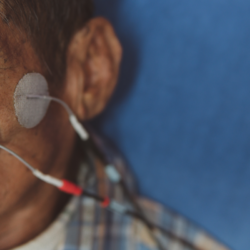Several cases of indigenous Monkeypox(MKP) infections have recently been reported in several European countries, North America and Australia, (particularly in men who have sex with men (MSM)). Suspected cases are being investigated in many countries. This is an unusual phenomenon. Several cases have now been confirmed in France in May 2022. For all the confirmed cases, the Ministry of Health’s analyses have identified a virus belonging to the “West Africa” clade of the MKP virus[1]. This suggests an initial link to Nigeria, where the virus has been circulating regularly since 2017. Apart from the case reported in the UK on 7 May imported from Nigeria, the newly reported cases do not report travel to Africa or a link to a person returning from Africa. At this stage, the reported cases are mostly mild, and there are no reported deaths.
What are the symptoms of monkeypox?
After an incubation period of 5 to 21 days, monkeypox infection begins with fever, headache, muscle pain and weakness. The disease also causes lymph nodes. The lymph nodes (neck, face, etc.) are large. The person is contagious as soon as the first symptoms appear. Within 1 to 3 days (sometimes more) of the onset of fever, the patient develops a rash, which often starts on the face and may spread to other parts of the body, including the palms, soles and genitals. Other mucous membranes (ENT, conjunctiva) may also be involved. It should be noted that recently detected cases in MSM have reported a preponderance of lesions in the genital area. Skin involvement occurs in a single outbreak. The lesions pass through various successive stages (macule, papule, vesicle, pustule and then crust), and evolve in a uniform manner. People are no longer infectious when all lesions have healed after the scabs have fallen off. The disease usually lasts 2 to 3 weeks. Monkeypox infection should be considered after exclusion of differential diagnoses, particularly chickenpox in children during periods of active circulation (nursery and school). The skin involvement of Monkeypox infection is different from that of chickenpox (which is uncommon in adults). In chickenpox, the rash develops in several flares. The palms of the hands and soles of the feet are spared.
How does the virus circulate in the human population?
Transmission of the Monkeypox virus occurs when a person comes into contact with an animal (e.g. rodents), a human being or materials contaminated with the virus. The virus enters the body through a lesion on the skin (even if not visible), the respiratory tract or the mucous membranes. Animal-to-human transmission of monkeypox can occur through bites or scratches, preparation of bushmeat, direct or indirect contact with body fluids or lesion material. There are usually no reservoir animals present in Europe. Human-to-human transmission can occur via respiratory droplets, which generally cannot travel more than a few metres, requiring prolonged face-to-face contact. Other modes of human-to-human transmission include direct skin-to-skin contact with body fluids or the lesion under any circumstances, including sexual intercourse, medical or paramedical care, and indirect contact with the lesion, for example through contaminated clothing, linens or dishes. In this context, vigilance is required in the presence of any suggestive case. As a reminder, Monkeypox infection is a notifiable disease in the same way as other orthopox viruses. In addition to the mandatory reporting of confirmed and probable cases, any suspected case must be reported by health professionals without delay to the Regional Health Agency (ARS) in your region [2].
Who is at risk?
Except for patients with severe forms of the disease, immunocompromised patients, pregnant women and very young children for whom special care should be taken, cases of Monkeypox do not require systematic hospitalisation and will be subject to a recommendation of isolation at home. They may be given time off work or permission to work from home in order to respect this isolation for 3 weeks after the onset of signs. In its opinion, the HCSP specified the precautionary/preventive measures to be implemented in the context of the management of a possible case in a health establishment, and the various treatments available against the Monkeypox virus and the doctrine for their use (limited to a few indications and according to a case-by-case expertise by collegial decision). The circuit for the management of patients and samples was developed in conjunction with SpF, the COREB and SAMU-Urgences de France:
- People with symptoms suggestive of Monkeypox infection, including rashes, can call the SAMU-Centre 15 for referral.
- Health professionals in the city who receive patients with symptoms suggestive of Monkeypox infection can also call the SAMU-Centre 15 (or directly the referring infectiologist) to be supported in the management of their patients, if necessary. The SAMU-Centre 15 regulators are in contact with the referring infectiologists to classify the case and, for suspected or probable cases, to organise their management. Teleconsultations can thus be organised, if necessary.
- Samples should be taken in order of priority in reference health facilities (ESR), in local health facilities or in town (if the ESR is too far from the patient’s home).
- Patients should be given instructions on how to get to the collection site: use a private vehicle, call an ambulance, avoid using public transport (protective measures when using transport: regular rubbing of hydroalcoholic solution, covering the lesions, wearing a mask).
- Patients with severe forms of the disease will be referred in first intention to the RSEs.
The vaccination strategy for at-risk contacts will soon be the subject of a dedicated DGS-Urgent message. As this health situation is unprecedented and evolving, these guidelines are likely to be regularly updated. [1] The MKP virus is an orthopoxvirus, of which two main clades are known: West Africa and Central Africa (Congo basin). [2] The ARS can be notified in conjunction with the infectious disease specialist who receives the patient for sampling.





